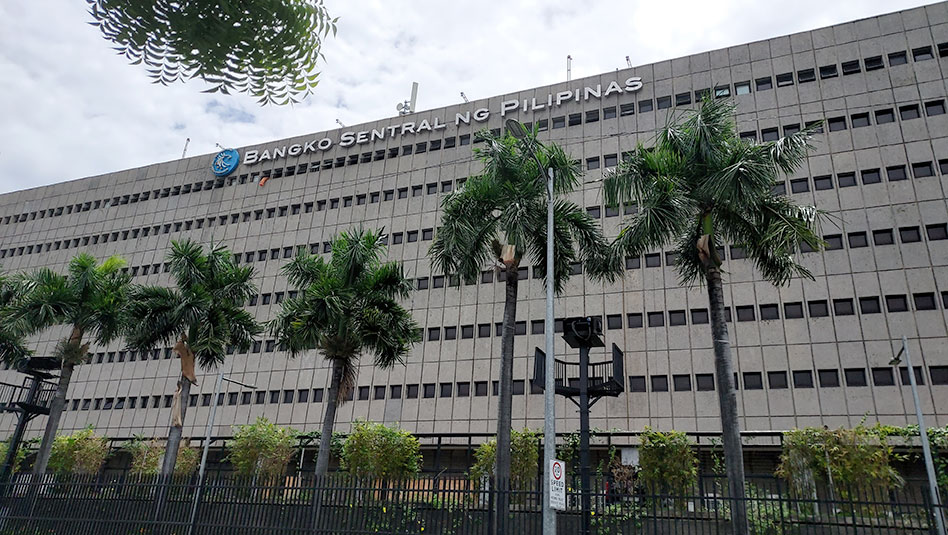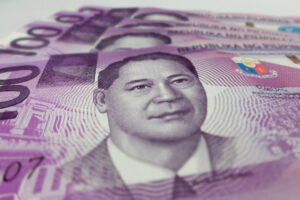




Philippines Trade Update: Growing exports lead to stronger trade balance
 DOWNLOAD
DOWNLOAD

Policy Rate Views: Fed’s cautious step towards neutral
 DOWNLOAD
DOWNLOAD

Policy Rate Updates: Closer to BSP’s Goldilocks moment
 DOWNLOAD
DOWNLOAD


PH debt vulnerability seen as ‘moderate’ — ADB

THE PHILIPPINES’ public debt and external debt vulnerabilities are seen as “moderate,” the Asian Development Bank (ADB) said.
In its latest sovereign debt heat map analysis from 2022-2023, the ADB said the Philippines ranks “relatively poorly” due to current account deficits, currency depreciation, and low import coverage of reserves.
The heat map determines thresholds against which the relevant risk indicators can be included in the low, moderate, or high categories.
The ADB gave the Philippines a “moderate” ranking in the heat map, as its public debt took up 59.2% of gross domestic product (GDP) and external debt at 27.1% of GDP from 2022 to 2023.
The National Government’s outstanding debt hit a record high of PHP 13.75 trillion at the end of February.
The ADB cited several risks that contributed to higher debt for many countries.
“Persistent current account deficits are a major risk factor in Bhutan, Maldives, Mongolia, the Federated States of Micronesia, the Lao People’s Democratic Republic, Nauru, Georgia, the Philippines, and Kazakhstan,” the ADB said.
In 2022, the Philippines’ current account deficit widened to USD 17.8 billion from the USD 5.9-billion shortfall in the previous year.
The current account deficit is expected to narrow to a USD 17.1-billion deficit which is equivalent to -4% of GDP, the central bank said.
The ADB also noted volatile exchange rates heighten risks, particularly in Lao People’s Democratic Republic, Timor-Leste, Myanmar, Korea, the Philippines, and Nauru.
The peso slumped to an all-time low of PHP 59 against the US dollar in October last year amid aggressive monetary tightening and elevated inflation.
The ADB’s Asia Sovereign Debt Monitor showed that many countries’ debt remains well above the regional average. Many countries sharply accumulated high levels of debt during the coronavirus disease 2019 (COVID-19) pandemic to scale up emergency and recovery spending to protect their citizens and prop up their economies, the ADB noted.
“Several other countries saw debt ratios grow by more than 20 percentage points (ppt): the Lao People’s Democratic Republic (43 ppt), Fiji (36 ppt), and the Philippines (22 ppt),” it said.
While public debt ratios are stabilizing in the medium term, the ADB said these are still at “significantly high levels by historic standards and not uniformly so across the region.”
“Even where ratios seem to be somewhat in check, growing costs and difficulty of refinancing debt amid quantitative tightening constitutes an increasing drain on vital fiscal resources at a time when economies are reeling from the pandemic and struggling to maintain or rebuild at least some space for further fiscal support, lest long-term development goals will have to suffer,” it added.
As of end-December, the Philippines’ debt-to-GDP ratio stood at 60.9%. This is still above the 60% threshold considered manageable by multilateral lenders for developing economies.
To better stabilize debt levels across the region, the ADB said that countries will need to address risks such as low economic growth, persistent inflation, and rising commodity prices.
Data showed that a lack of fiscal normalization would bring debt ratios to 58% of GDP by 2025, or nearly 7 ppt above the baseline.
The ADB said governments must implement reforms that will rationalize fiscal expenditure, optimize subsidy schemes, and implement a sovereign debt restructuring mechanism.
“While there are few universal prescriptions for a group as diverse as Asia and the Pacific, full transparency about their debt and its management, and increased mobilization of domestic resources to the extent possible, should be a prerogative to all,” it added. — By Luisa Maria Jacinta C. Jocson
This article originally appeared on bworldonline.com





 By BusinessWorld
By BusinessWorld